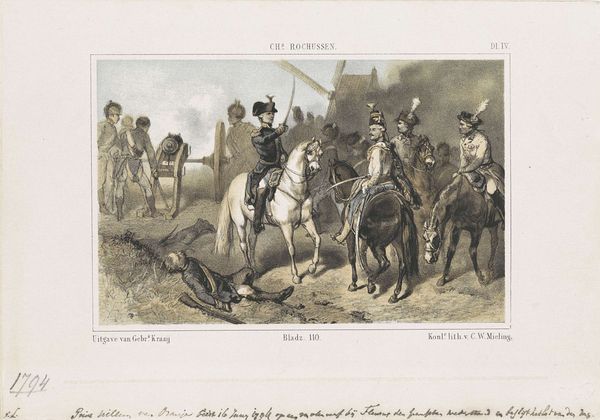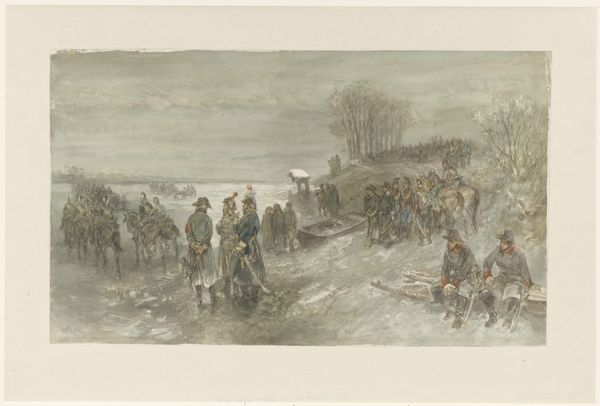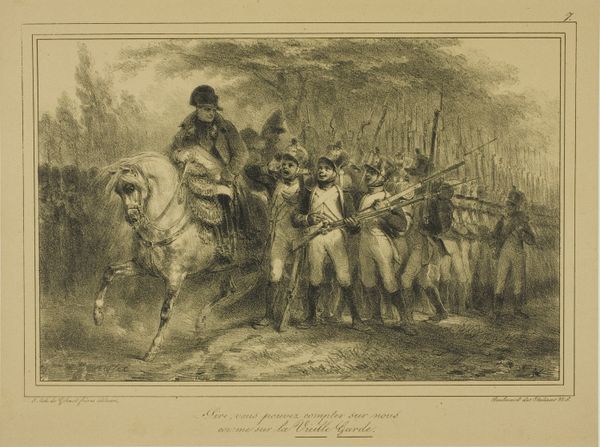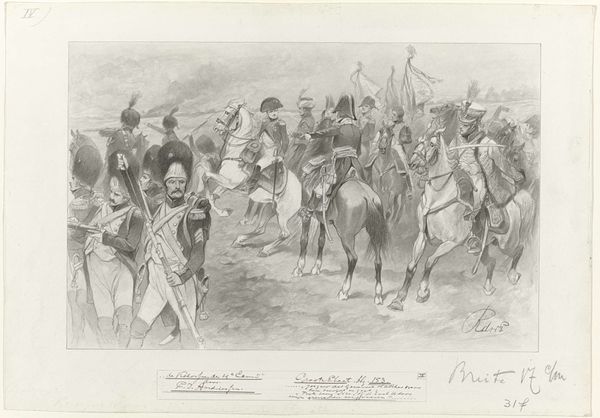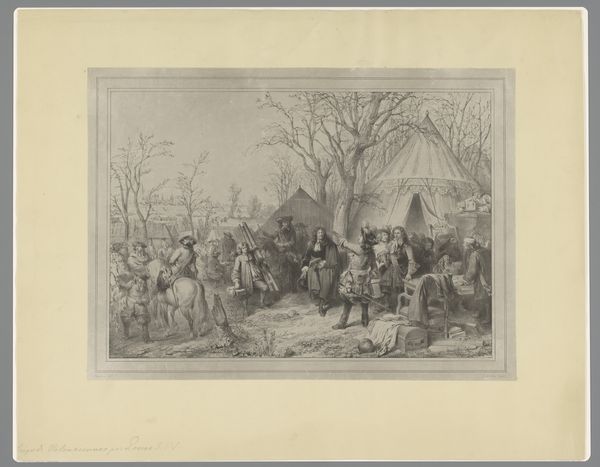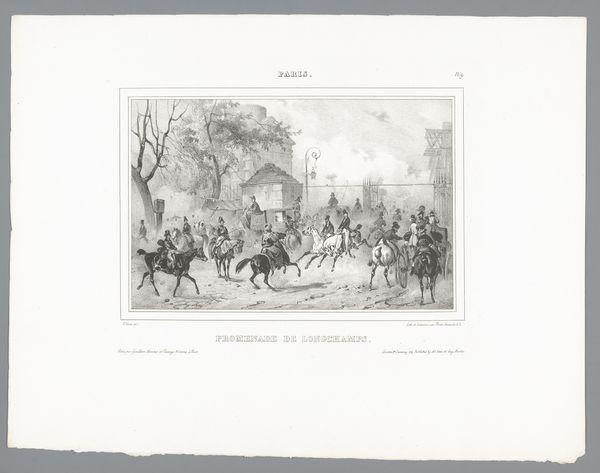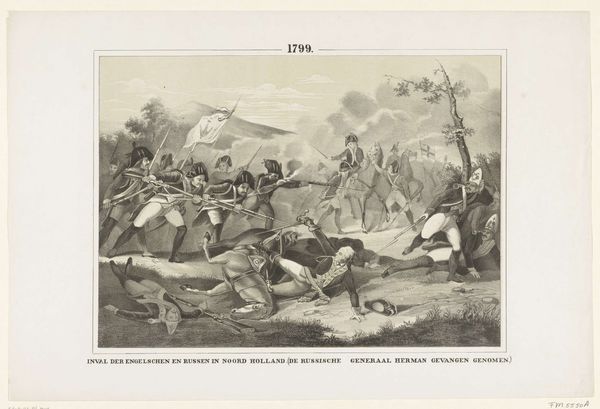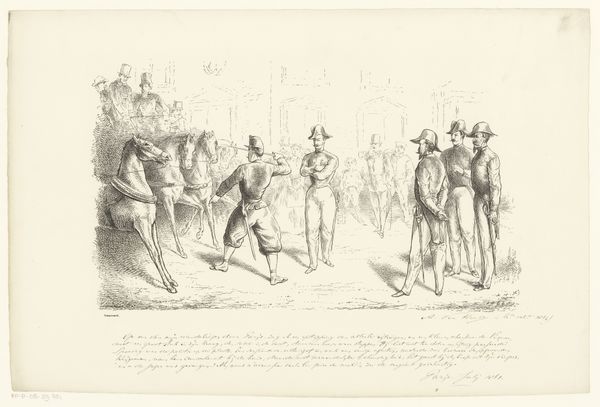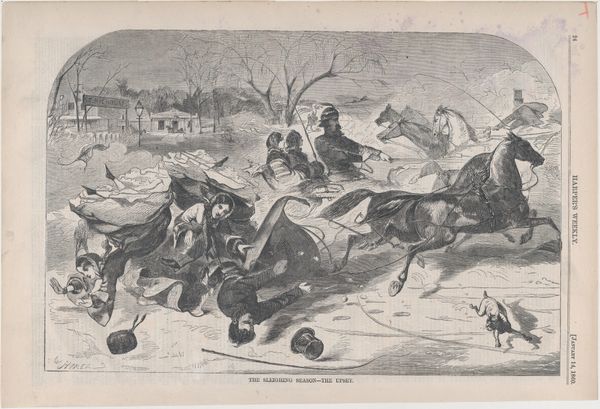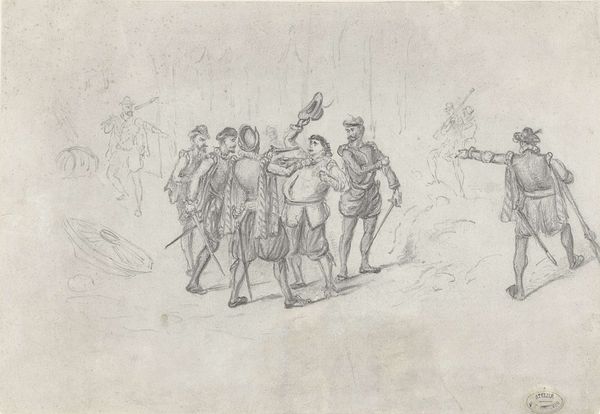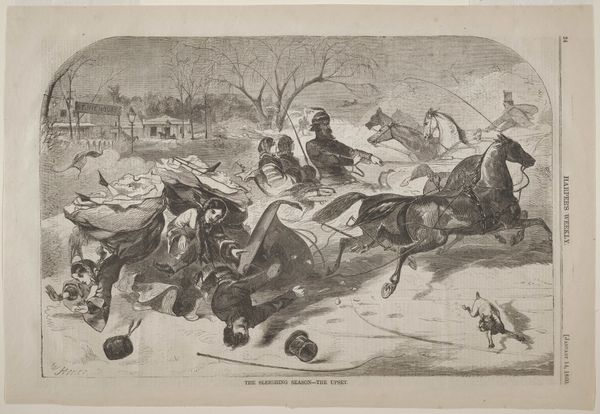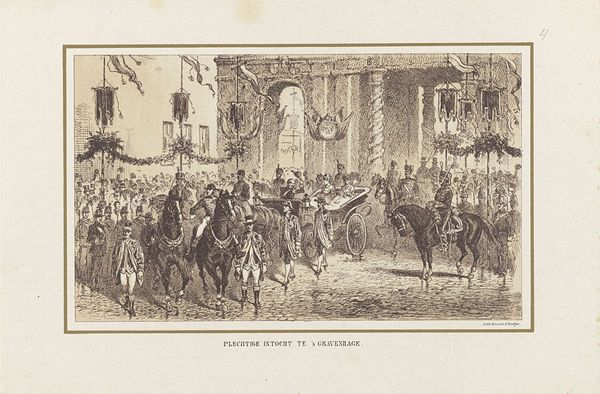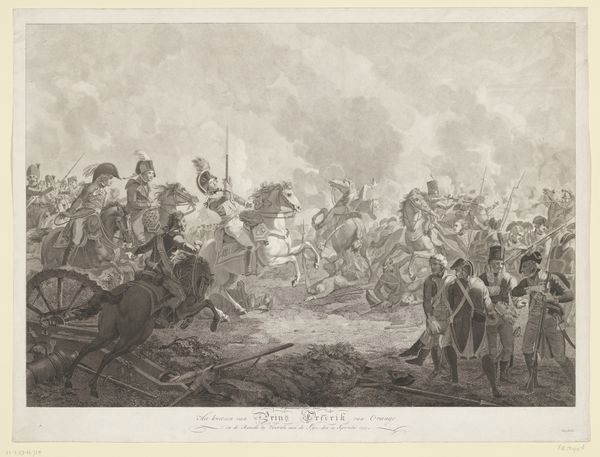
Ontwerp voor illustratie voor De Kolossus der Negentiende Eeuw door P.J. Andriessen (Groot Plaat, blz. 63); scène uit het leven van Napoleon 1877 - 1942
0:00
0:00
drawing, pencil
#
portrait
#
drawing
#
narrative-art
#
pencil
#
history-painting
#
academic-art
Dimensions: height 225 mm, width 337 mm
Copyright: Rijks Museum: Open Domain
Curator: This pencil drawing by George Lodewijk de Wetstein Pfister, created between 1877 and 1942, is titled "Ontwerp voor illustratie voor De Kolossus der Negentiende Eeuw door P.J. Andriessen (Groot Plaat, blz. 63); sc\u00e8ne uit het leven van Napoleon" which translates to "Design for illustration for P.J. Andriessen's 'The Colossus of the Nineteenth Century'". What's your first impression? Editor: Immediately, I sense a pervasive chill—both in the literal depiction of a snow-covered scene and a more figurative, detached observation of power. There's a somber atmosphere despite the military presence. Curator: Pfister was clearly working within the established tradition of academic art, especially its fondness for historical narrative, specifically Napoleonic history here. The piece almost functions as a record, a capturing of a specific historical moment. How do you see the narrative working, considering contemporary discussions around nationhood? Editor: The very deliberate composition hints at power structures and hierarchy. Napoleon, centered on horseback, occupies a raised and controlling position. This placement reflects the construction of an imperial persona. Note also the cannon in the foreground—an assertion of military dominance. The choice to portray Napoleon in this specific manner and medium – drawing rather than a glorious painting, might represent a different sort of commentary on that construction of power and nationhood at the end of the 19th century, beginning of the 20th. Curator: That’s an insightful reading, emphasizing the symbolic weight imbued through visual markers of hierarchy and the calculated distribution of power dynamics. We also must think of the illustration's broader reception and distribution through a publication and mass media channels. This gives wider distribution and power dynamics. Editor: Absolutely, and considering this was created much later than the actual events of Napoleon's life, there's a process of mythologizing happening. Whose perspectives and power does this representation privilege? It becomes pertinent to ask why this image was relevant then, what cultural narratives were being reinforced or challenged by revisiting this imagery of Napoleon at the time of its creation? It's about control of not just the battlefield, but of the historical narrative itself. Curator: Precisely, this reminds us that even seemingly straightforward depictions carry loaded messages, especially when we consider that, being a preparatory sketch, the work opens a window into the mechanics of image creation and, implicitly, cultural narrative itself. Editor: Indeed, engaging with pieces like this makes us not only witness history, but scrutinize its layered interpretations and enduring impacts on modern perception.
Comments
No comments
Be the first to comment and join the conversation on the ultimate creative platform.
